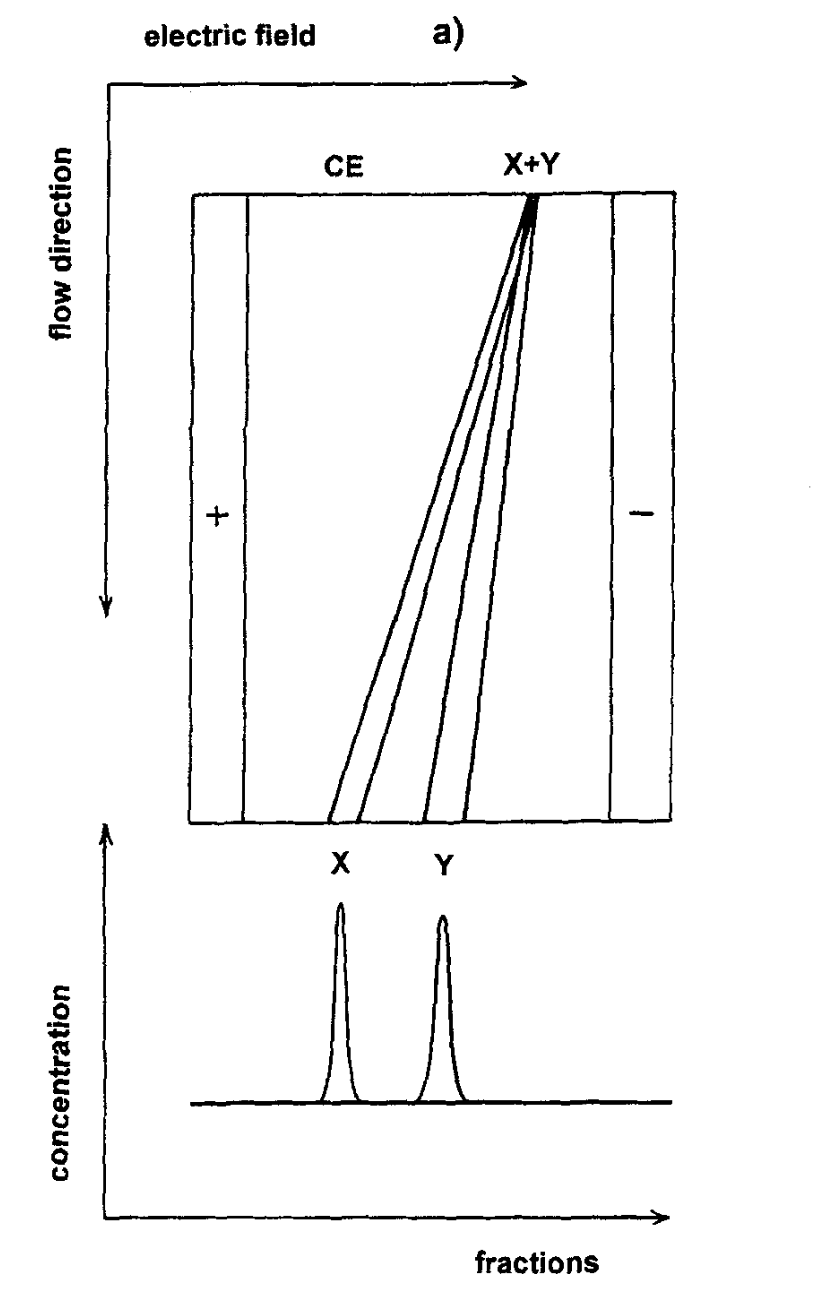Literature/202301192057 free flow electrophoresis

The idea behind the technique is applying an electric field perpendicular to the direction of the flow of a solution containing the analyte, and the BGE, background electrolyte. Analyte is then separated based on electrophoretic mobility at the end of the channel.
Some concerns with the method are: - Joule heating of the sample (there's some effort put on heat dissipation in the design of the instruments). This is a concern because thermal gradients will generate sample separation in directions that may not be aligned with the electrophoretic mobility. - A membrane must be used to separate the electrodes - There are some local-zone effects with the charges - Flow-rate/resolution are linked (faster allows for lower separation) - Band broadening and dilution of the separated compounds. - Differences in conductivity between sample and background electrolyte lead to electrohydrodynamic distortions. - Longer residence time may increase band broadening due to diffusion (but seems to be a small effect).
There are different implementations of free-flow electrophoresis, including:
- free flow electrophoresis
- Isotachophoresis
- Free-flow isoelectric focusing
- Recycling zone electrophoresis
"Free flow electrophoresis is not aimed to be an analytical method. "
Backlinks
These are the other notes that link to this one.
